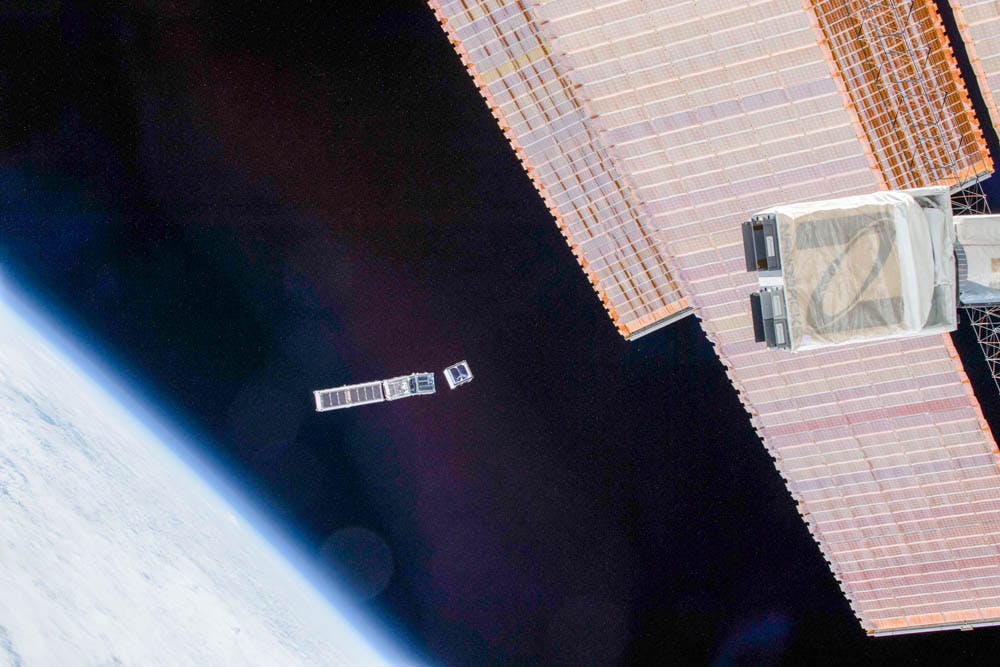Since its successful launch and deployment earlier this year, the Brown Space Engineering’s EQUiSat cube satellite has been continuously transmitting information down to Providence. A team of students at BSE has been collaborating on the project since its conception nearly eight years ago. As the team receives and records data from EQUiSat, BSE is already in the preliminary stages of preparing their next big cube satellite project, which is tentatively set for mid-2021, said current Project Manager Jacob Leiken ’20.
Due to its lengthy and, at times, arduous construction, seeing the satellite’s launch has made the ever-growing list of team members proud of their project. Hunter Ray ’17, the project’s former team manager, was tasked with delivering EQUiSat to Houston to prepare for its launch and deployment this summer. “I was a little nervous having to hold onto it. … I got some funny looks on the airplane,” Ray said. In Houston, EQUiSat underwent final tests and was loaded for launch. Ray met other BSE alums to watch the launch. EQUiSat was launched around 4:40 a.m. May 21 and was deployed into orbit July 13. “It was pretty exciting not only for us to see how far we’ve come but for (the alums) to see their dream become a reality,” Ray said.
As intended, the satellite passes over Providence about twice a day. “That’s the mission … the primary (goal) is to get people excited about it and try to show people the flash” of the satellite’s LEDs, said McKenna Cisler ’20, technical lead of the team. But its current orbit has been taking the satellite over Providence during the daytime, making it invisible to people on the ground, Leiken said. Though no one has seen EQUiSat’s flash yet, as it orbits around the Earth, the times during which it will pass over Providence will gradually enter the night, allowing its flash to be fully visible, he added.
EQUiSat’s initial project of testing the potential of lithium iron phosphate batteries to be used in spacecraft has seen success in its mission. The batteries, which power the satellite’s LEDs, have shown that they can function in the harsh conditions of space. “We’ve also been getting data that confirms that they are charging and discharging normally, handle the cold temperature well and don’t get too hot or fail to dissipate heat when providing a lot of current to the LEDs,” Cisler wrote in a follow-up email to The Herald.
BSE is currently working on improving the ability of its ground stations to receive and analyze transmissions from EQUiSat, Ray said. There are currently two stations, with one currently in Rome and another in construction on top of Barus and Holley, Leiken said.
EQUiSat currently has a web app and a mobile app that display its current location, allow users to interact with a model of the satellite and provide a complete history of its transmissions. Notifications can also update users whenever EQUiSat is over their current position, Leiken said.
The team has received positive feedback from the ham radio community, which isable to pick up EQUiSat’s transmissions from around the world as it passes by. Transmissions have even been received in Saudi Arabia, Leiken added.
The satellite is also being used by the team as a symbol for the BSE outreach program. BSE plans to teach younger students about space engineering and use EQUiSat as an educational tool to illustrate scientific concepts such as magnetic fields, Cisler said. The team is working on lesson plans and hopes to create an after-school program for further outreach. “Space is accessible: We built this, you can look up and see the stuff in space; it’s easily done,” Cisler said. Leiken added that many children dream of being astronauts when they grow up but may abandon that dream due to the lengthy and grueling process. BSE’s success shows that people can have a connection to space without having to go into space, he said.
While BSE still has time to collect and analyze data from EQUiSat before it burns up in the atmosphere, the team has already begun construction on its next satellite and is brainstorming ideas for its new focal point of research, Cisler said. One of the ideas being discussed is the implementation of a robotic arm with a camera that could lead BSE to build an aptly named “SelfieSat”, he added.
“We put one of the cheapest satellites in orbit. … We’ve already had a ton of mission success,” Cisler said.





